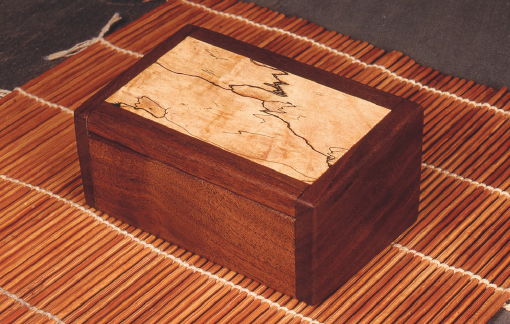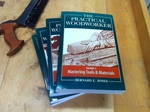We may receive a commission when you use our affiliate links. However, this does not impact our recommendations.

Who hasn’t found themselves fussing over a project – running a plane over it just one more time or fretting over whether or not it needs another sanding? As with anything in life, the quest for perfection is an illusive one. In this excerpt from “Build 25 Beautiful Boxes,” master box-maker Doug Stowe shares a few thoughts about the idea of perfection and what it means in his own woodworking journey.
 Many cultures around the world share an interesting notion of perfection. Amish quilt makers would leave a single stitch undone rather than make the “perfect” quilt, expressing their belief that only God could make something perfect. Among weavers in Turkey, the same idea is found. Many Chinese and Japanese artists believe that their work should include “incompleteness and imperfection,” an emptiness that leaves room for further growth.
Many cultures around the world share an interesting notion of perfection. Amish quilt makers would leave a single stitch undone rather than make the “perfect” quilt, expressing their belief that only God could make something perfect. Among weavers in Turkey, the same idea is found. Many Chinese and Japanese artists believe that their work should include “incompleteness and imperfection,” an emptiness that leaves room for further growth.
I’ve never had much problem with perfection. I’ve yet to make the perfect box or the perfect piece of furniture. I can’t imagine in my own work the need to leave something imperfect as a statement, to ever complete the perfect piece and find myself in that predicament. A craftsman sees the points where his or her own work needs refinement – the little slips of the saw or chisel, the sanding marks, the slight rounding where something should be straight. Fortunately, most observers don’t notice these things and accept our work, seeing it as perfect despite its many flaws or, at least, choosing to pay attention to its strengths.
In woodworking, we face the inevitable. As human beings and not machines, we make mistakes in measuring. Things slip both from the fingers and from the mind as we work. Wood is not the perfect material. It has imperfections. It is always expanding and contracting in response to changes in climate, challenging the artist in his efforts to make the perfect piece.

A gentleman I once met is a friend of the famous rocking chair maker Sam Maloof. The gentleman told me the following story. Sam was visiting Japan and was shown a beautiful storage box for sweaters. He noted how precisely it was made and marveled to his host that something could be made of real wood to such close tolerances. He asked, “Doesn’t this lid swell shut in the humid summer months?” His host answered, “Yes, but it is a sweater box. Who would open it then?”
As we develop our skills through new projects, our ideas about perfection evolve. Perfection is elusive, always just beyond our reach like the carrot on the stick.
I am lucky to live in a community that has encouraged my work with wood. I often go into friends’ homes and find work that I had done years ago when my skills were not as well developed. I can look at each piece from a critical perspective, finding fault with my earlier shortcomings, or I can find in each piece some small steps that were taken in my personal growth as a woodworker and feel honored that the work is cherished and loved despite its flaws.
Growth toward perfection is part of the story that woodworking tells. When you begin to understand that woodworking is storytelling, each slip of the chisel becomes part of the perfection of the finished piece.
 Check out Doug Stowe’s book “Build 25 Beautiful Boxes” for more great insights into woodworking and box-making as well as projects for creating a wide array of stunning wooden boxes. Available now at shopwoodworking.com
Check out Doug Stowe’s book “Build 25 Beautiful Boxes” for more great insights into woodworking and box-making as well as projects for creating a wide array of stunning wooden boxes. Available now at shopwoodworking.com
Here are some supplies and tools we find essential in our everyday work around the shop. We may receive a commission from sales referred by our links; however, we have carefully selected these products for their usefulness and quality.









The Japanese term is Wabi Sabi.
Richard Powell defines it in 3 simple realities. “Nothing lasts, nothing is finished, nothing is perfect.”
All of this follows Buddhist teachings and the thinking that an object would invoke melancholy and spiritual longing. Wabi Sabi is the wisdom and beauty of imperfection.
None of this means sloppy glue joints and half ass work! It might be the flaws in the wood, the age and patina of an old piece, the balance and feel of an object that creates Wabi Sabi.
It is a great concept and well worth the time to explore the premise.
“Illusive,” “illusory,” or “elusive”?
I had to read that paragraph about the sweater box twice and then to a few people I work with. A simple idea, but it really hit home.